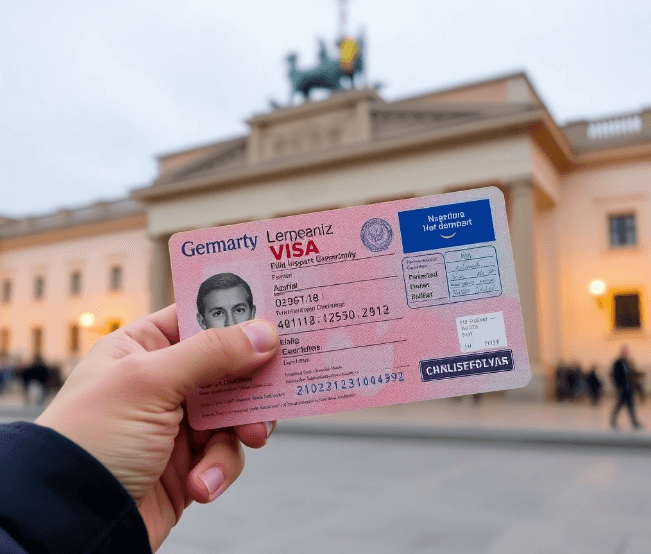Canada, known for its scenic beauty and high standard of living, attracts thousands of individuals and families each year seeking a new home. One of the most popular routes for immigration is the Express Entry system.
This comprehensive guide aims to walk you through the process step-by-step, ensuring a clear understanding of what to expect and how to prepare for your journey to becoming a Canadian resident.
What is Express Entry?
Express Entry is an online system used by the Canadian government to manage applications for permanent residence from skilled workers. It’s renowned for its efficiency and faster processing times compared to traditional immigration routes. Express Entry covers three main federal immigration programs: the Federal Skilled Worker Program, the Federal Skilled Trades Program, and the Canadian Experience Class.
Federal Skilled Worker Program
This program is for individuals with significant work experience, education, and language proficiency in English or French. It’s ideal for those who can contribute to Canada’s economy and integrate smoothly into its workforce.
Federal Skilled Trades Program
Tailored for skilled tradespeople, this program targets those with experience in trade occupations. An important aspect here is having a valid job offer from a Canadian employer or certification in your trade from a Canadian province.
Canadian Experience Class
Aimed at those with Canadian work experience, this program benefits individuals who have already been working in Canada and have a strong grasp of societal and workplace norms.
Step 1: Assess Your Eligibility
Before diving into the application process, it’s crucial to determine your eligibility. Canada’s immigration website offers a comprehensive tool to assess whether you meet the criteria for Express Entry. Factors such as age, education, work experience, and language proficiency are crucial in this assessment. It’s important to be thorough and honest during this assessment to avoid any future complications.
Step 2: Language Proficiency Tests
Proficiency in English or French is mandatory. You’ll need to take a language test approved by Immigration, Refugees and Citizenship Canada (IRCC), such as IELTS or CELPIP for English, or TEF for French. Ensure you prepare adequately for these tests, as higher scores significantly boost your chances in the Express Entry pool.
Step 3: Educational Credential Assessment
If your education was outside Canada, you’d need an Educational Credential Assessment (ECA). This verifies that your foreign degree, diploma, or certificate is valid and equal to a Canadian one. Organizations like World Education Services (WES) can provide an ECA.
Step 4: Creating Your Express Entry Profile
Once you have your language test results and ECA report, you can create your Express Entry profile. This online form requires detailed information about your background, skills, work experience, language ability, education, and other personal information. Accuracy is key, as this information determines your Comprehensive Ranking System (CRS) score.
The Comprehensive Ranking System (CRS)
The CRS is a points-based system that Immigration, Refugees, and Citizenship Canada (IRCC) uses to assess and score your profile. Points are awarded based on factors such as age, education, work experience, language skills, and other elements that are considered beneficial for Canadian society and the economy. The higher your CRS score, the better your chances of receiving an Invitation to Apply (ITA) for permanent residency.
Step 5: Entering the Express Entry Pool
Once your profile is complete, you’ll enter the Express Entry pool, where you’ll be ranked against other candidates. It’s important to note that being in the pool does not guarantee an invitation to apply for permanent residency. Candidates are typically selected from the pool during periodic draws, which usually happen every two weeks.
Step 6: Improving Your CRS Score
While in the pool, you can take steps to improve your CRS score. This can include gaining more work experience, improving language scores, obtaining additional educational qualifications, or securing a valid job offer from a Canadian employer. Provincial Nominee Programs (PNPs) are another avenue to increase your score, as receiving a nomination from a province adds significant points to your CRS.
Step 7: Receiving an Invitation to Apply (ITA)
If your CRS score is above the cut-off in a draw, you will receive an ITA. This is a crucial step, as it officially invites you to apply for permanent residence in Canada. Once you receive an ITA, you will have 60 days to submit a complete application with all the necessary documentation.
Step 8: Submitting Your Application
The application for permanent residence requires comprehensive documentation, including police clearance certificates, medical exams, proof of funds, work experience documentation, and more. It’s essential to gather and review all documents carefully to ensure they meet the requirements set by IRCC.
Step 9: The Application Review Process
After submitting your application, it enters the review process. During this period, IRCC officers assess your application to ensure all information is correct and that you meet the eligibility requirements. You may be asked to provide additional information or attend an interview.
Step 10: Receiving Your Permanent Resident Status
If your application is successful, you’ll receive a Confirmation of Permanent Residence (COPR) and, if necessary, a visa. With these documents, you can make your move to Canada. Upon arrival, you’ll need to complete a few final steps, such as meeting with an immigration officer, to officially obtain your permanent resident status.
Step 11: Preparing for Your Move to Canada
Once you receive your COPR, it’s time to prepare for your move. This involves planning your travel, deciding where to live in Canada, understanding the Canadian healthcare system, and setting up your finances. It’s advisable to research the cost of living in different cities, job opportunities in your field, and community resources available for new immigrants.
Step 12: Settling in Canada
Settling in a new country is both exciting and challenging. In your first few weeks, you’ll need to accomplish several important tasks, such as applying for a Social Insurance Number (SIN), opening a bank account, finding accommodation, and understanding public transportation. Many communities offer settlement services to help new immigrants adjust to life in Canada.
Tips for Successful Integration
- Network and Community Engagement: Engage with local communities and networks relevant to your profession. This can help in finding job opportunities and understanding Canadian workplace culture.
- Language Skills: Continue improving your English or French language skills. Proficiency in the local language is key to integrating into Canadian society.
- Understand Canadian Culture: Familiarize yourself with Canadian customs, laws, and societal norms. This understanding will ease your transition and help you integrate more effectively.
Conclusion
Immigrating to Canada through the Express Entry system is a journey that requires preparation, patience, and perseverance. By following this step-by-step guide, you can navigate the process with greater confidence and clarity. Remember, the journey doesn’t end with receiving your permanent residence; it’s just the beginning of your new life in Canada. Embrace the opportunities, face the challenges, and enjoy the journey of becoming a part of the diverse and welcoming Canadian society.
Welcome to your new home, Canada!







Leave a Reply